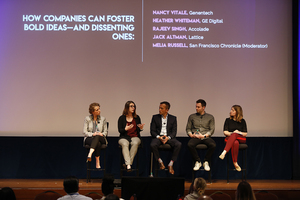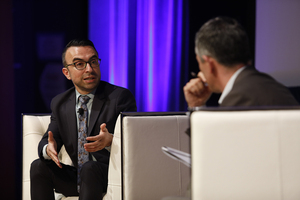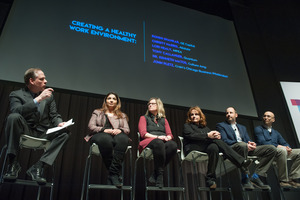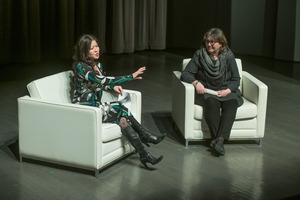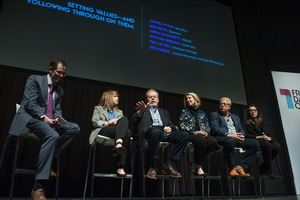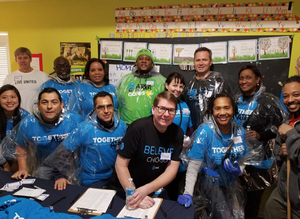Why Quick Fixes Aren’t Enough to Create Real Diversity
In recent years, Corporate America has made increasing use of two words: diversity and inclusion. Both internally and in public, businesses have pledged to increase and retain the proportion of women and minorities in their leadership ranks. Still, progress has been slow. Major gaps still persist, notably in tech-driven industries. Part of the reason is that human behavior can be hard to change. For example, nearly three-quarters of executives choose protégés who look just like them, according to a recent survey of 3,200 white-collar workers by the Center for Talent Innovation. What’s becoming clear is that attempts at quick or narrow fixes don’t work. “I think one reason why this has been such a persistent issue is because when companies typically approach it, they treated it like a one-off program where you have a series of trainings and everybody goes back to their workplaces and nobody really pursues things until the next training,” said Phyllis James, the chief diversity and corporate-responsibility officer for MGM Resorts International, who spoke on a panel of experts at the From Day One conference on April 9 in San Francisco, moderated by Katy Steinmetz, San Francisco bureau chief for TIME. More often than not, there’s an urgency among executives to confront the issue, but making real progress calls for “behavior changes that are required every single day from every single leader, so culture becomes the most important thing,” said Michele Nyrop, senior vice president of human resources at Banana Republic and Gap Inc. “The level of accountability required to get that is a long, hard road.” James said she still has to explain to managers why diversity is important, both for business and moral reasons. “I know that we want to think the best of everyone, but everyone does not accept that as a basic premise,” she said. Talking About Systemic Issues Tyler Muse, founder & CEO of Lingo Live, which offers language coaching for multilingual employees, said companies shouldn’t just preach the gospel of D&I, but take time to listen to underrepresented groups talk about political and social issues that may affect them. These topics could include Black Lives Matter, #MeToo or the lack of an adequate pipeline for developing diverse talent. Talking about these larger news stories can create empathy inside the company, Muse said. “If you ignore the bigger picture, if you don’t talk about it as a company, then you’re going to be really limited in fostering that conversation about what diversity and inclusion really look like,” Muse said. “Being open with our data was a big win for us,” said Ernst Using Advanced Sourcing Tools Another technique that companies can use to boost diversity hiring is to use artificial intelligence and other technologies to help, for example in reducing unconscious bias on the part of recruiters. According to Rachel Ernst, vice president of employee success at Reflektive, a people-management company, the single biggest action that increased diversity at her company was using a sourcing tool requiring a certain number of candidates come from underrepresented backgrounds. After starting the practice last year, half of all new hires have been women, she said. Making Inclusion Part of Day-to-day Work Salesforce, the customer-relationship management giant, made equality a core value of the company, said Molly Ford, the company’s director of global equality, who said it’s a “north star” that guides the company when making big decisions. It also helps bring diversity to the daily work lives of Salesforce employees, Ford said. This involves keeping in mind details like having pronoun pins for employees to wear or gender-neutral bathrooms at Salesforce events. But it also involves creating actionable suggestions for employees who want to be an ally to people of diverse backgrounds. If an employee wants to go to a Salesforce-sponsored Diwali Festival, for example, they would need to sign up for training to learn about the cultural significance of wearing a Sari, Ford said. Salesforce also suggests that allies ask people about their journey to equality, listen with empathy, and speak up when they see something wrong, such as harassment or a racist joke. Additionally, managers at Salesforce receive a monthly scorecard with data about hires, attrition and promotions of women and underrepresented minorities. At MGM Resorts, the company’s 80,000 employees participate in an annual diversity-and-inclusion survey that asks questions about daily interactions with colleagues and managers. “It doesn’t matter how many platitudes or slogans companies give lip service to if it’s not really lived in the daily workplace of the organization,” James said. Reflektive, too, uses employee surveys, Ernst said. And it’s important that companies are transparent about the results of those surveys, so employees know their responses are being heard. “Being open with our data was a big win for us,” Ernst said. Similarly, Muse said Lingo Live uses a Slack bot called Allie that sends out questions about inclusion a few times per month. The biggest pattern gleaned from Allie was that employees felt alienated by the fact that there weren’t enough women in leadership. “We got called out for that,” he said. What Didn’t Work Reaching out to diverse employees and asking them for hiring referrals from their professional networks wasn’t successful, said Ford. Salesforce is just too big to follow up effectively with employees who referred someone for an open role. “We honestly felt like we disrespected you a little bit if we tapped your network and then you didn’t feel like it paid off,” Ford said. "The instant you look at a resume, you're biased," said Sloyan Everyone Is Responsible The lack of diversity in some fields, notably tech and finance, is often blamed on the so-called pipeline problem, which holds that companies don’t have enough qualified candidates coming though the educational system and workforce-development programs. Yet to some extent, that’s passing the blame, experts say. Changing recruiting strategy to focus on more geographically diverse areas may help, but companies should also look at employee experience, leadership behavior, and making sure diversity is reflected in marketing materials and product operations, each with their own set of initiatives. “It really has to be treated as a serious business imperative that has all of the complexity and dimensions of other business problems,” James said. “Your D&I team is there to be a catalyst to integrate diversity and inclusion into the core fabric of your culture. They’re not there to do few programs now and then, but achieving meaningful and impactful inclusion is the responsibility of every different part of the organization.” In a presentation following the diversity panel, Tigran Sloyan, CEO of CodeSignal, explained why the hiring process needs to move beyond the resume. CodeSignal produces industry-standard assessments of job applicants so that companies can make data-driven hiring decisions. “The instant you look at a resume, you’re biased. The proxies we use today,” he said, “are getting less reliable all the time.” Rachel Sandler is a freelance journalist based in the San Francisco Bay Area. She covers business, technology, local real-estate development and housing policy. Follow her on Twitter at @rachsandl




